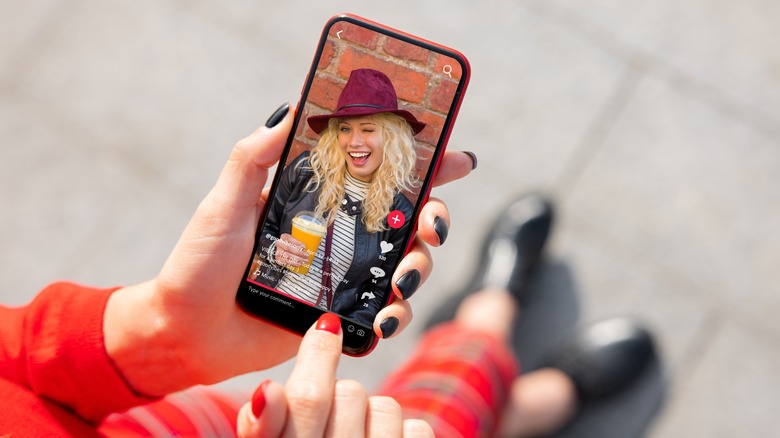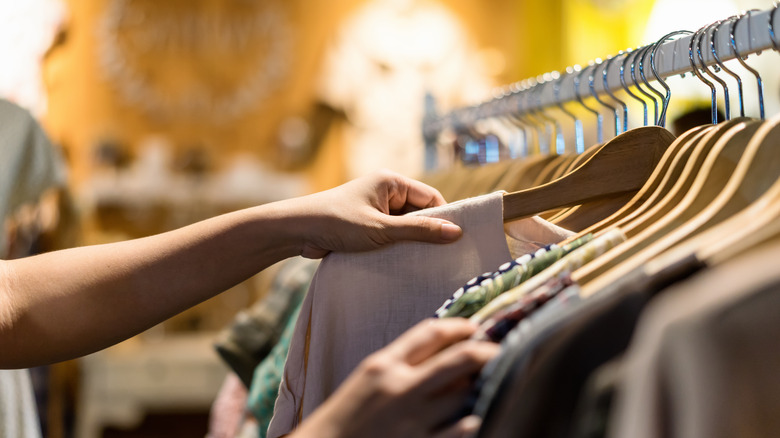An Expert Outlines How You Can Avoid Social Media Influence Into Overspending
Social media has really changed the marketing landscape. Influencers, ads tailored to our interests, and purchase tracking online have made it so we feel like the things that make their way to our streams are personalized just for us. Social media influencers on TikTok, Instagram, and Facebook can earn a solid income by trying out an item and giving a real-time review of it, and this trend often leads users to make impulse purchases.
Consumers enjoy many perks that come with influencer shopping. It's convenient to review products on our phones, and if we follow people with the same tastes and interests, it can seem like the shopping experience is truly tailored.
Because shopping via influencers is so popular, overspending is occurring in many households. Being able to purchase a cute outfit for work or the perfect gift for our mother-in-law in one click without having to physically go to a store to try out the product is the pinnacle of convenience, but for many, it seems that this shopping via influencer may be evolving into an addiction. Luckily, digital strategist and marketing consultant Christen Malone explains that there are ways to protect ourselves from seeing these content creators pushing their products.
Hide your influencer apps
Part of the reason influencers get so much of our attention is that they are constantly staring back at us via our phones. So to break your overspending habit, you can begin by hiding the apps in a place where you cannot access them easily. Also, hide the influencers directly by unfollowing them. "... unfollowing and 'hiding' influencers that tend to over-promote is a great first step," Malone tells Glam. "This will keep those types of ads out of your feed."
It may seem like a hard move to make, but unfollowing or hiding are both great first steps to take when trying to gain control of your impulse spending. Take the plunge, and you may find that it can help you spend less on items you probably don't have to have. If you don't want to unfollow your favorite influencer, you can simply mute them so they aren't constantly popping up in your feed.
Stop engaging with the ads
If you are interested in curbing your overspending because of your visits to these accounts, you can take a more active approach after moving the ads from your home screen and unfollowing problematic influencers. Malone also recommends completely quitting engaging with the ads that show up on your account. Instead, do your best to scroll by them. This will help the algorithm understand that you are no longer a person who is interested in ads that encourage you to buy things you don't need.
"On the flip side, engaging with other types of accounts (animals, design, art, food) will pull in more variety of content on your social platforms," Malone suggests. Start engaging with posts that require no monetary responsibilities from you, and that enrich your social media feeds instead of asking you to purchase what they are presenting you. Not only will you fill your feed with things that may inspire you organically, but you'll remove the toxic consumerism sites that take away from your happiness and your bank account.
Go incognito
If you still feel the pressure to trust influencers and their product knowledge, there are some strategic actions you can take to increase impulse control and release yourself from any tracking the app might be taking part in regarding your purchases. Malone tells us, "Personally, if I see an item that an influencer is promoting, I like to go to an incognito web browser and find the item on my own. I don't want Instagram (or the influencers) tracking my activity or marketing more in my direction." By taking the research on in your incognito browser, it will allow you to really look into whether or not this product is worth your money without any strings attached.
Similarly, many shoppers feel uneasy by the ad tracking taking place within their shopping apps and social media sites. After researching your product, take a couple of days to decide if you really need this item or if you were just hooked by the presentation of it. If you're still interested days later, revisit the product in an incognito way, and make your decision as off the grid as possible.
Set a reasonable budget
If shopping by way of influencer is actually something you really enjoy, there may be a responsible way to keep it in your life. Some consumers really do need an influencer's opinion because they do not have time to go to the store themselves, and they don't want to take the risk of not liking a product without getting someone else's opinion on it. If this is the case, Malone suggests setting an "amount of cash" that you can use for shopping each month.
She warns against Buy Now and Pay Later options because interest can build up, leaving you in debt. Also, credit card usage is dangerous and can place you into severe debt if your impulses get the better of you. If you've got a set amount that you've budgeted for every month, you can enjoy shopping a bit more knowing that you've planned for this expense.
Second-hand shopping
Finally, in order to curtail impulse buying and get the overspending under control, try to find the products the influencers are suggesting in a second-hand way. Malone says that it's a good idea to look for the items you love on Poshmark, eBay, or Mercari. Gently used, high-end items are available to consumers at a discounted rate, and they will definitely be kinder to your budget. In addition, you can feel great knowing this way of shopping is better for the environment.
The same logic can be applied to brick-and-mortar thrift stores. Once you've been introduced to a product, you may be surprised how many times you'll see something similar surface in your everyday life. If you are on the hunt for an item, you can make a day of it with some friends and search for similar products already taking up space in a store. Many people find thrifting to be an exciting, sartorial challenge that will shake up their wardrobe while saving them money.





